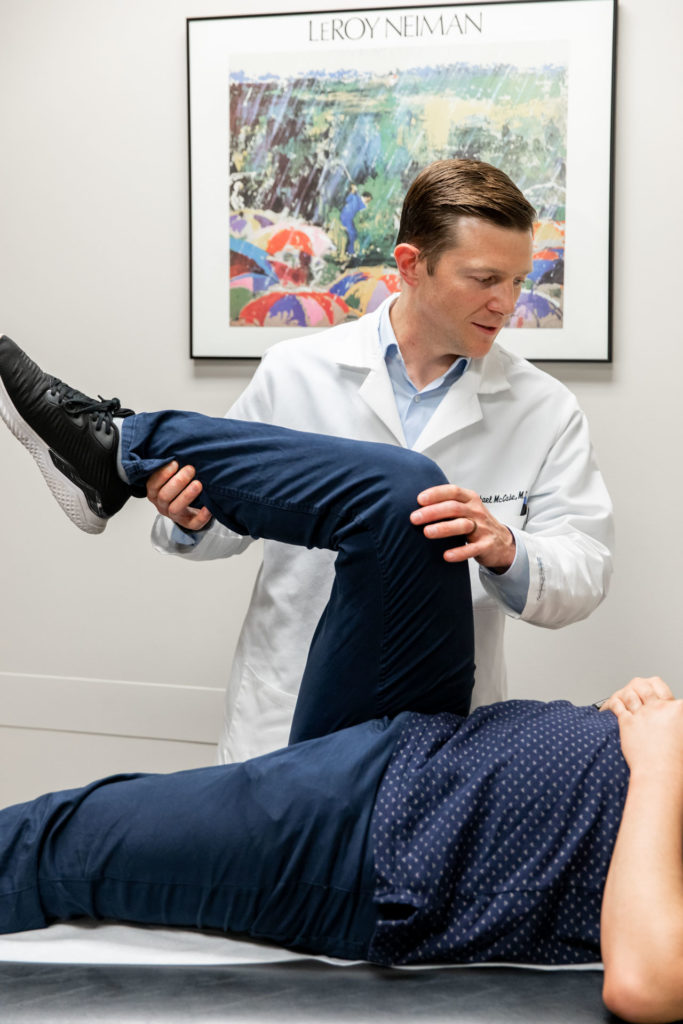
Making the decision to have joint replacement surgery can be life-changing in some very positive ways. After surgery, however, the recovery process can be challenging if not managed properly.
For those who have just had a joint replaced or are considering it, the most important advice to follow is that of your surgeon and his or her care team. Each patient is different, and your surgeon may have recovery recommendations that are very specific to your circumstances.
Having said that, consider the following as you think about what you can do to help optimize your recovery after joint replacement:
Tip #1 – Prepare for post-op before surgery day.
As you get ready for your surgery, take time to prepare for recovery as well. For example, buy food that is easy to make, stock up on household supplies to avoid running errands, and make sure you have the assistance you need from family or neighbors.
Tip #2 – Do some light exercises at home.
When you are discharged, your physician or care team will likely provide you with exercises to support your recovery at home. It is important to perform the exercises as instructed to optimize recovery following joint replacement. Call your doctor or care team if you need further instruction or reminders about exercising safely at home after joint replacement.
Tip #3 – Recognize warning signs.
To prevent injury and ensure proper healing, ask questions and educate yourself about possible red flags, such as signs of infection or blood clots. Persistent fever (higher than 100 degrees), chills, increased redness, tenderness or swelling due to inflammation, and increased pain may be signs of infection. If you notice tenderness or redness above or below your incision area, or severe swelling, you should notify your doctor immediately, as these may be signs of a blood clot.
Tip #4 – Rearrange furniture (and other objects) before surgery to optimize mobility and safety at home after surgery.
To minimize use of stairs, you may temporarily change rooms. For example, it may be easier to make the living room your bedroom if your bedroom is on the second floor. Additionally, remove any throw rugs or area rugs that could cause you to slip, and securely fasten electrical cords around the perimeter of the room.
Tip #5 – Make everyday objects more accessible.
Place items you use frequently – such as your phone, remote control, glasses, reading materials and medications – within easy reach so you can access them without too much strain.
Tip #6 – Buy or rent special furniture or equipment if needed.
For certain joint replacement surgeries, you may find it helpful to get some equipment to meet your specific needs. For example, a firm chair with a higher-than-average seat is safer and more comfortable than a low, soft-cushioned chair. You may also wish to install a shower chair, gripping bar or raised toilet seat in your bathroom to assist when bending over or raising yourself from lowered positions.
Tip #7 – Use assistive devices to avoid bending over.
Prior to surgery, you may want to consider getting a long-handled shoehorn, long-handled sponge, and a grabbing tool to reduce the risk of injury caused by bending over.
Tip #8 – Take pain relievers – but only as prescribed or recommended by your doctor.
While it’s important to look for red flags, slight swelling and inflammation around the incision is common after surgery and should go down with time, depending on the surgery. Manage your pain appropriately by following medication and dosage instructions set by your doctor. Some over-the-counter medications may be off limits while you heal – for example, aspirin can increase bleeding risks in some patients – so consult your doctor before taking any medicines not already prescribed or recommended.
Tip #9 – Take time off from vigorous activity.
The greatest benefit of joint replacement surgery is the opportunity it provides to return to the activities you love. Do not participate in rigorous activities, such as running, swimming, or heavy weight lifting until your doctor clears you for it, as this could put you at risk for reinjury or complications, making your recovery period longer.
For more information about joint replacement…
Watch the videos below or call 913-319-7600 to request an appointment with one of our physicians.
Dr. Wingerter explains hip replacement surgery:
Dr. Shriwise on partial knee replacement surgery:
Dr. Rhoades on total shoulder replacement surgery:
Dr. Jones on reverse total shoulder arthroplasty:
About Kansas City Orthopedic Alliance
Kansas City Orthopedic Alliance is proud to provide the best orthopedic care in the Midwest. Our patient care team includes board-certified, fellowship-trained orthopedic surgeons and physiatrists, as well as physician assistants, nurse practitioners, durable medical equipment specialists and more. With 6 convenient locations across the Kansas City metro, KCOA offers surgical and non-surgical treatment options across all subspecialties of orthopedic medicine.


